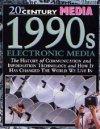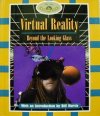The Disappearing Newspaper Additional Information
For a detailed report on the future of newspapers, see www.carnegie.org/reporter/10/news/ (Carnegie Corporation of New York).
An article about teen attitudes to newspapers can be found at www.usaweekend.com/04_issues/040411/040411teen_survey.html (USA Weekend).
To learn more about virtual reality panoramas, go to geoimages.berkeley.edu/wwp.html (University of California, Berkeley).
To see an online newspaper produced by kids in Great Britain, see www.childrens-express.org/(Children’s Express).
Sohn, Emily. 2005. The snappy lingo of instant messages. Science News for Kids (March 30). Available at http://www.sciencenewsforkids.org/2005/03/the-snappy-lingo-of-instant-messages-2/.
______. 2005. Wave of destruction. Science News for Kids (Jan. 19). Available at http://www.sciencenewsforkids.org/2005/01/wave-of-destruction-2/.
______. 2004. A newspaper’s hidden cost. Science News for Kids (June 16). Available
at http://www.sciencenewsforkids.org/2004/06/a-newspapers-hidden-cost-2/.
______. 2003. Electronic paper turns a page. Science News for Kids (Dec. 3). Available at http://www.sciencenewsforkids.org/2003/12/electronic-paper-turns-a-page-2/.
______. 2003. Opening a window on video paper. Science News for Kids (Oct. 1). Available at http://www.sciencenewsforkids.org/2003/09/opening-a-window-on-video-paper-2/.
Books recommended by SearchIt!Science:
 |
Newspapers: From Start to Finish — Mindi Rose Englart
Published by Blackbirch Press/Gale Group, 2001.
How are newspapers put together? Most people don’t realize how hard it is to put together a newspaper every day. Newspapers include a published mix of local, national, and international news. It all starts with a story. Many people work together to write the story and take the photographs. Many more people work behind the scenes to edit, print, and distribute the newspaper. |
 |
20th Century Media: 1990s, Electronic Media — Steve Parker
Published by Gareth Stevens, 2002.
As the 20th century drew to a close, more words and pictures were available to the public than ever before. This book surveys mass media during the 1990s, explaining the developments of technology as well as the changes in popular culture. Digital systems, expanded television options, the growth of the Internet, hidden microphones and privacy issues, round-the-clock live news, and mp3 technology are all discussed. The book’s double-page spreads also highlight new special-effects technologies in filmmaking, Bollywood and the Blair Witch Project, Britpop, boy bands and girl bands, sports in the mass media, cybercafes, and Nelson Mandela. |
 |
Virtual Reality: Beyond the Looking Glass — Elaine Pascoe
Published by Blackbirch Press/Gale Group, 1998.
What is virtual reality? Why is it so important to scientists? “When most of us hear the words ‘virtual reality’, we think of games in which the player is totally immersed in an interactive, computerized world.” But it is so much more than that. Learn about what virtual reality is, how it got started, and how it works. |
Power Words
virtual reality A computer simulation of something real that allows a person to feel like he or she is part of the simulation. To participate in virtual reality, a person usually wears goggles or a helmet that show an image of a space. The person can then perform actions within that space, and the effects of those actions appear on the inside of the goggles or helmet as they happen.
Copyright © 2002, 2003 Houghton-Mifflin Company. All rights reserved. Used with permission.
